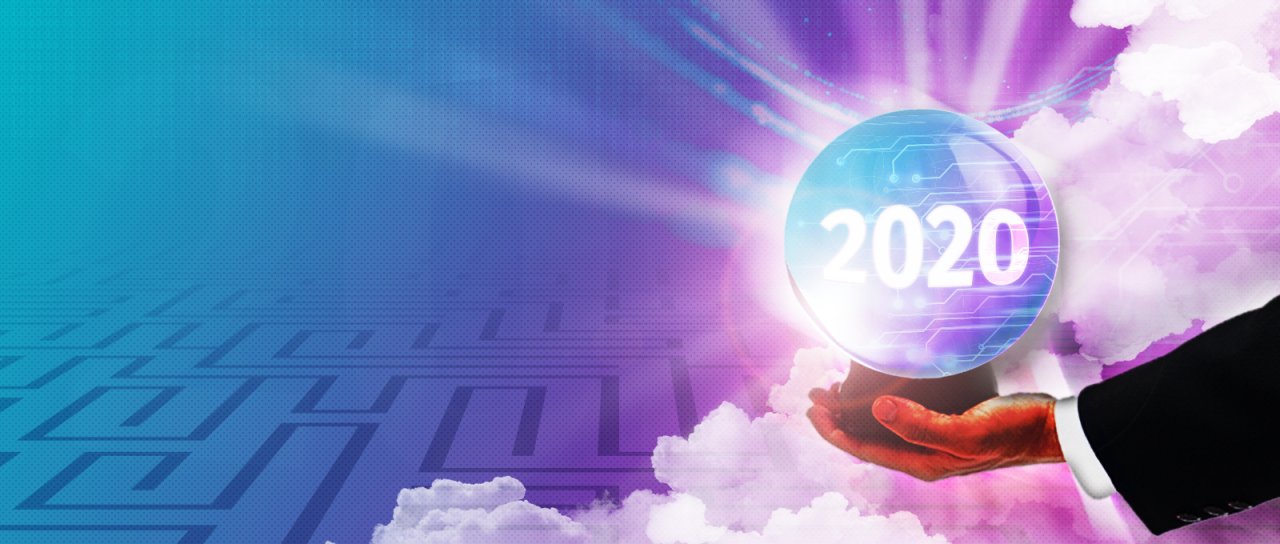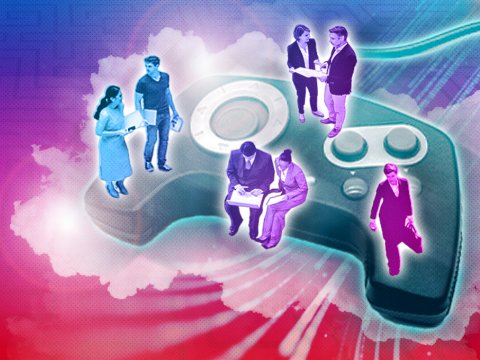Lee James’ 2020 Predictions: Mid-Year Review
How well did Lee James, CTO of Rackspace Technology in EMEA, score on his 2020 predictions?
At the end of last year, Rackspace CTO Lee James offered insights into five technological trends that would take centre stage for 2020. So as we come to the halfway mark for 2020, we’re revisiting the predictions, with Lee sharing his insights on how accurate they were and his experiences of those trends.
We’re halfway through 2020, and it’s time for mid-year reviews. So it seems like the perfect time to take another look at the predictions I made in December about 2020 and score how accurate they’ve been.
Prediction 1: Hybrid becomes the new multicloud, again
Score: 10 out of 10
Hybrid cloud is here to stay. Already this year, we’ve seen Azure VMware and Google Cloud VMware Engine join VMware Cloud on AWS, extending VMware private cloud onto hyperscale public clouds. And Azure Arc and AWS Outposts joined Google Cloud’s Anthos this year in bringing hyperscale public clouds into the private cloud.
Likewise, we’re seeing customer journeys going in both directions — from private to hybrid, but also from public to hybrid. The bottom line is, customers need the capabilities that only hybrid cloud can provide. It’s the only way to get a “cloud right” environment for your workloads. And we’re going to see that continue to grow as we go into Q3 and Q4.
Additionally, the deployment of Kubernetes has increased significantly among our customers, which makes sense as containers provide a level of portability across hybrid cloud. Developers can deploy code between clouds and have a defined environment for each application — creating predictability and stability and allowing for easier development in terms of things like testing.
Prediction 2: Cloud native personas will shift
Score: 10 out of 10
We’re seeing IT teams transforming themselves into a new organizational structure (cloud organization 3.0, you might say), with separate squads working together to deliver different components. You’ve got data analytics, data engineering, machine learning, algorithms, edge computing, IoT computing — and they each have a seat at the table. In response, we launched Rackspace Teams this year, which provides the squad (or “Pod” as we call it) for our customers — including some major banks in the UK.
This new structure allows you to innovate quicker and deliver new value propositions faster. And that’s been even more important this year, with businesses needing to make a sudden shift to multi-channel. The more data and analytics you have around your customers and how they operate, the better equipped you are to deliver the best experience.
Prediction 3: The continued Edge & IoT build up
Score: 7 out of 10
We’ve seen some growth this year, but more in a reactive way than a proactive way. Due to the pandemic, there’s an increased need for sensors and infection tracking. And cities are looking to use data to make better decisions and drive new experiences, such as telehealth, remote learning and broadband access. But in terms of hyper reality and how the future could look, that has slowed down a bit.
When we eventually return to offices, it will be fascinating to see how IoT sensors are utilized. The capabilities are endless. Rather than just monitoring desk occupancy, they will be able to track how many people are in the office and exactly when. This means facilities management will have to figure out how to effectively use this new data.
When we return to shopping in stores, the retail sector will be looking to use data supplied by smart shelves, another example of IoT, which reveals shopping habits. Smart shelves have sensors which provide real-time inventory visibility, so pricing can be updated in response to demand, as seen in Amazon Go stores.
Additionally, the growth of 5G is inevitable, as mobile phone usage continues to increase. With over 2.5 billion users spending over 3.5 hours per day on their mobile phones globally, it’s set to increase to a user base of 3.8 billion by 2021.
Prediction 4: Security at the fore
Score: 9 out of 10
High-profile security breaches are becoming more constant. A big reason is because — as business departments connect to more and more clouds and SaaS products — it’s becoming harder for IT to govern and report on their environment. For example, your teams need to be able to fire up a new digital app for some quick testing, and then turn it off. Or use data analytics to understand some user behavior, and then turn it off. It needs to be done the right way.
We’ve seen a plethora of tool sets and capabilities come forward, to help customers monitor their environments. But there’s still work to be done, like embedding machine learning and AI directly into the security process, as an industry standard, out of the box. The challenge is being able to comprehend what “normal” means for each business — as, inside any company, the normal can vary.
This year, we launched cloud native security services, to help customers monitor their public cloud states. It goes beyond permissions and where applications are being hosted, by looking into data and development pipelines as well.
Prediction 5: Cloud maturity will change the market in the 2020s
Score: 10 out of 10
I’ve seen the cloud evolve throughout my career. I started with my first cloud “virtualization team” in 2004, where we deployed and delivered infrastructure-as-a-service. By 2011, the cloud had evolved into the DevOps model, with developers engaging with operations. That cloud model flourished at companies like Airbnb, Fitbit, WhatsApp and Instagram.
And now we’re moving into cloud maturity. Cloud maturity is moving forward quickly, where edge technology, 5G and IoT are becoming the default standard. You can gather information from any location, any sensor, any person, any device and make sense out of it. We’re seeing more and more cloud services being utilized. But more importantly, more data being gathered and analyzed and acted upon.
Plus, with the new cloud organization models (see Prediction 2), you can have the right team to meet these growing demands. It’s much like the Fortnight model, I have mentioned before, where my sons are playing a game where they work as team — using their different capabilities regardless of their individual location.
Cloud maturity is indeed changing the market. Together, the technology and the people are building the future in 2020. And an exciting future it is.

Lee James Gives His Cloud Predictions for 2020
About the Authors

Chief Technical Officer, EMEA
Lee James
As Chief Technology Officer for Rackspace EMEA, Lee James is responsible for helping customers bring value to their business through the Rackspace portfolio. Lee’s an avid customer champion and vocal about our EMEA strategy, leading the strategic development of Rackspace EMEA products and services and serving as the executive sponsor for a number of our largest EMEA customers. Lee has more than 20 years of experience leading teams across large-scale, multinational and agile-based environments. He’s been instrumental in developing and implementing DevOps practices, cloud deployments, analytics platforms, edge computing solutions, digital strategy and IT transformation solutions to deliver significant business value to customers. His prior experience includes senior roles across BP, Betfair and GlaxoSmithKline. At Betfair, Lee was responsible for delivering a DevOps-driven platform that performed more transactions than all of the European stock markets combined, each day. At BP, he was recognized for building the company's first multi-cloud platform.
Read more about Lee JamesRelated Topics


